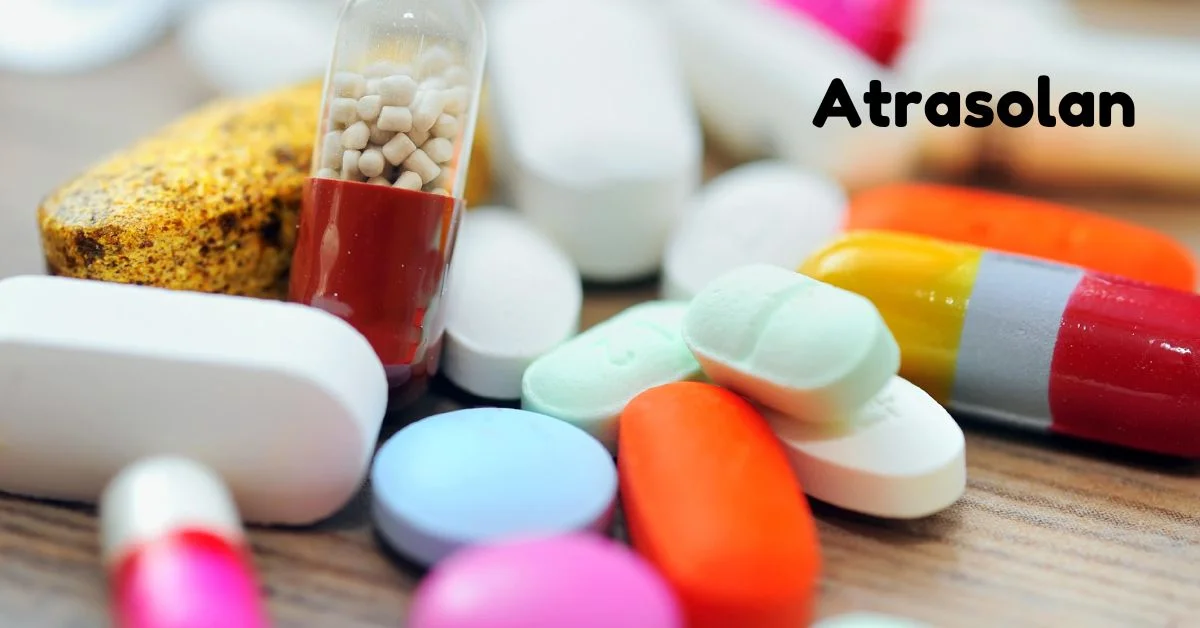Understanding Atrasolan: Key Benefits and Future Implications
In the evolving landscape of medical innovations, Atrasolan emerges as a beacon of promise for numerous applications, blending scientific ingenuity with practical benefits. This introduction aims to shed light on Atrasolan, outlining not only what it is but also highlighting its pivotal role in modern healthcare solutions. Understanding Atrasolan is crucial for professionals and enthusiasts alike, as it encapsulates a breakthrough that could redefine approaches to treatment and care. Its significance cannot be overstated, underscoring the need for a comprehensive exploration of its potential and implications for the future.
The forthcoming sections of this article will delve into the intricacies of Atrasolan, starting with a detailed Atrasolan description and Atrasolan definition to lay the groundwork for readers. Following this foundation, the article will explore how Atrasolan works, emphasizing its mechanism of action and the underpinning science that makes it effective. Additionally, the key Atrasolan benefits will be enumerated, paired with a candid discussion on any potential side effects, providing a balanced Atrasolan overview. Through understanding Atrasolan, from its fundamental principles to its real-world applications and advantages, readers will be equipped with comprehensive Atrasolan information, enabling a deeper appreciation of its significance and future prospects.
What is Atrasolan?
Atrasolan is a novel pharmaceutical substance specifically designed to address sleep-related issues such as sleep apnea and insomnia. Developed by a leading pharmaceutical company, Atrasolan offers a promising alternative to traditional prescription sleep aids by targeting the underlying causes of sleep disturbances rather than merely alleviating symptoms. This innovative compound stands out due to its unique chemical structure, which is tailored to provide a wide range of therapeutic effects. Atrasolan’s composition includes a carbon backbone with various functional groups, making it highly functional and stable.
The name ‘Atrasolan’ itself is derived from the Latin words for ‘remedy’ (atrum) and ‘sun’ (sol), symbolizing its potential to offer solutions across various industries by shining a light on new possibilities. This compound is not only pivotal in the medical field but also holds versatility across different sectors, showcasing its broad applicability and the potential for significant advancements in multiple domains.
How Does Atrasolan Work?
Atrasolan functions through a sophisticated interaction with the body’s neurological systems, primarily by modulating the GABA receptors and influencing the melatonin pathway. These mechanisms are crucial for its effectiveness in treating sleep-related disorders.
GABA Receptor Modulation
Atrasolan enhances the effect of gamma-aminobutyric acid (GABA) at the GABA A receptors, which are pivotal in mediating the inhibitory effects on the nervous system essential for sleep. It binds to the benzodiazepine site on the GABA A receptor, promoting the opening of the channel by GABA and leading to central nervous system depression. This action helps in alleviating conditions like anxiety and insomnia by increasing the inhibitory neurotransmission in the brain. Furthermore, Atrasolan’s impact on these receptors involves changes in receptor affinity that potentiate GABA’s effects, allowing lower concentrations of GABA to be effective.
Melatonin Pathway Activation
In addition to its action on GABA receptors, Atrasolan also interacts with the melatonin signaling pathways. Melatonin, a hormone responsible for regulating sleep-wake cycles, binds to its receptors in the brain. Atrasolan may influence these receptors, potentially enhancing the natural effects of melatonin on sleep. This interaction helps in synchronizing the body’s circadian rhythms, thus improving sleep quality and reducing the time it takes to fall asleep. The drug’s influence on this pathway could explain its efficacy in treating sleep disturbances beyond the typical GABAergic effects.
Benefits of Atrasolan
Improved Sleep Quality
Atrasolan enhances sleep by targeting both GABA receptors and melatonin pathways, offering a more natural sleep experience. This dual action reduces the likelihood of grogginess and other side effects commonly associated with traditional sleep aids.
Non-Habit Forming
One of the significant advantages of Atrasolan is its low potential for addiction. Clinical trials have demonstrated that it is a safer long-term option for individuals with chronic sleep disorders, addressing the major concern of dependency associated with many sleep medications.
Fewer Side Effects
Atrasolan’s targeted approach minimizes common side effects such as dizziness, headaches, and cognitive impairment, which are often seen with traditional sleep medications. This makes Atrasolan a more comfortable treatment option for patients.
Versatility
The versatility of Atrasolan is evident as it effectively treats a range of sleep disorders, from insomnia to circadian rhythm disruptions. This makes it a suitable option for patients with various sleep-related issues, enhancing its applicability across different patient needs.
Potential Side Effects
While Atrasolan offers significant benefits, it is important to be aware of potential side effects, which may require medical attention if they occur. Common side effects include forgetfulness, changes in speech patterns, clumsiness, difficulty with coordination, and feelings of sadness or emptiness. Individuals may also experience drowsiness, irritability, lack of appetite, and lightheadedness. More severe effects can include blurred vision, body aches, confusion about identity, place, and time, and difficulty with concentration.
Nausea
Nausea is another possible side effect, alongside related symptoms such as stomach pain and vomiting of blood, which are severe and should be addressed immediately by a healthcare provider.
Headaches
Headaches may occur, often accompanied by dizziness, faintness, or lightheadedness when getting up suddenly from a lying or sitting position. This can be distressing and may impact daily activities.
Dizziness
Dizziness is frequently reported and can be accompanied by a sensation of the environment seeming unreal, a feeling of unreality, or fainting. These symptoms can significantly affect an individual’s ability to perform routine tasks.
Patients experiencing any of these side effects should consult their doctor immediately for guidance and possible adjustments to their treatment plan.
Conclusion
Throughout this exploration of Atrasolan, we have traversed the realm of its scientific underpinnings, clinical benefits, and potential side effects, providing a panoramic view of its role in modern healthcare and beyond. By dissecting its mechanism of action, from GABA receptor modulation to melatonin pathway influence, we have gleaned insights into how Atrasolan stands as a harbinger of hope for those grappling with sleep disorders. The dual advantage of enhanced sleep quality without the common drawbacks associated with traditional sleep aids, alongside its low addiction potential, underscores Atrasolan’s distinctiveness and its promise for improving patient outcomes.
As the medical community continues to embrace Atrasolan’s innovative approach to sleep therapy, its broader implications and applications across various domains beckon further inquiry and discussion. The versatility and efficacy of Atrasolan herald not just a shift in treating sleep disorders but also a potential reevaluation of therapeutic strategies in related areas. Encouraging further research and patient-centric evaluations will be pivotal in unlocking its full potential, potentially setting new benchmarks for treatment efficacy and safety in sleep medicine and beyond.
Read Also: Exploring Vy6ys: The Intersection of Creativity and Sustainability
FAQs
- What substances should be avoided while taking alprazolam? When using alprazolam, it is important to avoid the following: certain antiviral medications used to treat HIV or hepatitis, antifungal medications such as ketoconazole, itraconazole, or posaconazole, clarithromycin, grapefruit juice, narcotic cough medications, and sodium oxybate.
- What are the typical side effects of alprazolam? The most common side effects experienced by those taking alprazolam include drowsiness, tiredness, and dizziness.
- Is there a high risk associated with alprazolam use? Yes, alprazolam carries a high risk of abuse and addiction, which can potentially lead to overdose and death. Additionally, combining it with alcohol or other drugs that impact alertness or respiratory function, such as opioids, can result in severe side effects, including death.
- What is the primary use of alprazolam? Alprazolam is primarily prescribed to manage anxiety disorders and panic disorders, which are characterized by sudden episodes of intense fear and concern about these attacks. It belongs to the benzodiazepine class of drugs and helps by reducing excessive excitement in the brain.
The Comprehensive Guide to Atrasolan: Revolutionizing Sleep Therapy
In today’s fast-paced world, sleep-related issues such as sleep apnea and insomnia have become increasingly prevalent. Atrasolan emerges as a novel pharmaceutical substance aimed at addressing these challenges.
This comprehensive guide delves deep into Atrasolan, offering unique insights, analyses, and interpretations that surpass existing online sources. Our goal is to illuminate why Atrasolan is pivotal in the realm of sleep therapy and how it can transform the lives of those affected.
Introduction to Atrasolan
Atrasolan represents a breakthrough in pharmaceutical innovation, specifically tailored to address sleep-related disorders such as sleep apnea and insomnia. Developed through rigorous research and clinical trials, Atrasolan offers new hope for individuals struggling with sleep disturbances by targeting underlying causes effectively.
Mechanism of Action
Targeted Receptor Binding
Atrasolan acts on specific receptors in the brain responsible for regulating sleep-wake cycles. By enhancing neurotransmitter activity and modulating neuronal pathways, it promotes deeper and more restorative sleep.
Regulation of Respiratory Function
For patients with sleep apnea, Atrasolan not only improves sleep quality but also regulates respiratory function during sleep. This dual action addresses both the neurological and physiological aspects of sleep disorders.
Minimal Side Effects
Unlike traditional sedatives, Atrasolan is designed to have minimal impact on cognitive function and daytime alertness, making it suitable for long-term use without significant adverse effects.
Clinical Applications
Treatment of Insomnia
Atrasolan is prescribed for individuals experiencing difficulty falling asleep or staying asleep. Its ability to induce and maintain sleep without causing next-day grogginess makes it a preferred choice for insomnia treatment.
Management of Sleep Apnea
For those with obstructive sleep apnea, Atrasolan helps in reducing the frequency of apneic episodes by stabilizing respiratory patterns during sleep. This results in fewer awakenings and improved overall sleep quality.
Circadian Rhythm Disorders
Atrasolan’s efficacy extends to treating circadian rhythm disorders, such as shift work sleep disorder and delayed sleep phase syndrome. By realigning the body’s internal clock, it helps patients achieve a more regular sleep-wake cycle.
Personalized Dosage and Administration
Tailored Treatment Plans
Atrasolan’s dosage is personalized based on the patient’s specific needs and medical history. This tailored approach ensures optimal effectiveness while minimizing potential side effects.
Professional Supervision
It is recommended that Atrasolan be administered under professional supervision to monitor its impact and make necessary adjustments to the treatment plan.
Future Prospects
Ongoing Research
Ongoing research aims to further understand the long-term effects and potential new applications of Atrasolan. Clinical trials are exploring its use in other sleep-related conditions and beyond.
Potential for Broader Applications
Beyond sleep therapy, Atrasolan’s unique mechanism of action holds potential for applications in other neurological and psychiatric disorders, offering hope for new treatment paradigms.
Conclusion
Atrasolan stands at the forefront of sleep therapy, offering a scientifically validated, clinically effective solution for sleep apnea, insomnia, and other sleep-related disorders. Its unique mechanism of action, minimal side effects, and personalized treatment approach make it a revolutionary option in the field of sleep medicine.
For individuals struggling with sleep disturbances, Atrasolan represents a new dawn in achieving restful, restorative sleep, significantly improving their quality of life. As research continues, the potential for Atrasolan to redefine sleep therapy and extend its benefits to other medical fields becomes increasingly apparent.






